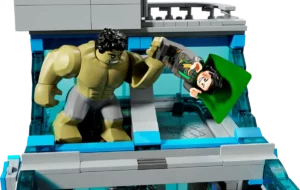Review By Paul Mount, 4 out of 5
2002 is likely to be remembered ?by me at least ?as the year the British film industry put aside the crinolines and gave Hugh Grant the afternoon off and rediscovered the simple pleasures of a well-told monster movie. Hot on the heels of DOG SOLDIERS came Danny Boyle’s visceral vision of life in a post-Apocalyptic Britain. Alex Garland’s economic script tells of an escaped psychological virus called the Rage which turns everyone it infects into a slavering, blood-crazed?r?ombie. The survivors battle to escape London to join a group of soldiers outside Manchester who, according to their radio broadcast, have the solution to the virus. Or do they? And if they do, is it quite what the survivors expected?
It seems from Boyle and Garland’s DVD commentary that they’ve finally accepted that what they’ve crafted here is a stylish zombie movie. The Infected look like zombies, they sound like zombies, they behave like zombies. Ok, they run like Olympic athletes but then the shambling arms-outstretched zombies would probably rob the film of much of its palpable sense of terror. For 28 DAYS LATER is a terrifying film. It’s a very British film too; the post-Apocalyptic scenario is one conjured up by generations of British SF writers from John Wyndham, John Christopher and the more contemporary Simon Clark. There’s no mistaking the power of the film’s early scenes in the deserted streets of London; one image of the film’s hero figure Jim wandering over a deserted Westminster Bridge is worth a thousand scenes of empty streets and decaying corpses. Bicycle courier Jim (Murphy) awakes in hospital from a coma (in the nude ?hmm, is this the norm for coma victims?) to discover London dead and deserted. He wanders into a church and finds it full of rotting bodies ?and a few screeching humans infected by a terrible bloodlust. He meets up with Selena (Harris) and Mark (Noah Huntley) who fill him in on the background of the Rage and its devastating impact on the country and, they presume, the world.
28 DAYS LATER rarely lets up the pace. For a low budget British movie it packs in spectacle upon spectacle, thrill upon thrill. It’s true that the film loses it way a bit in its last act when the soldier boys arrive and things go a bit DOG SOLDIERS and the upbeat ending is a bit pants but they’re minor criticisms set against the grim, unrelenting tone of the picture as a whole. It’s a heady, remarkable achievement and a film which you’ll watch again and again.
THE DISC: Now this is curious. Famously filmed on digital video, 28 DAYS LATER was a grainy eye-strainer in the cinema. The format suits the TV screen however; the picture seems sharper and brighter and it’s often easy to forget it wasn’t filmed on 35mm at all (apart from the coda at the end of the movie). Extras abound; Boyle and Garland’s commentary is witty and revealing, the deleted scenes are excellent, there’s a gloomy twenty-five minute ‘making of’ called ‘Pure Rage’ which tells us that a global pandemic is practically inevitable. Cheers. Trailers, storyboards and galleries round off a nifty package.



